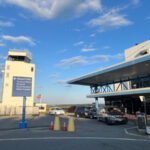Leaffooted bugs are common garden pests known for their distinctive leaf-like hind legs. But Do Leaf Bugs Fly? Yes, adult leaffooted bugs are strong fliers, capable of traveling considerable distances in search of food and mates. This article explores their flight behavior, life cycle, and the damage they can inflict on crops and gardens.
Leaffooted Bug Identification and Species
Leaffooted bugs belong to the Coreidae family. Three common species inhabit California and the western United States: Leptoglossus zonatus, L. clypealis, and L. occidentalis. All three species measure about 0.75 to 1 inch long with narrow brown bodies and a white zigzag pattern across their wings.
- L. zonatus displays two yellow spots behind the head.
- L. clypealis has a thorn-like projection extending from the head.
- L. occidentalis lacks both of these distinguishing features.
Leaffooted bug eggs are brown, cylindrical, and laid in string-like strands on host plants. Nymphs hatch resembling assassin bug nymphs but can be distinguished by their developing leaf-like hind legs as they mature.
Leaffooted Bug Life Cycle and Flight
Adult leaffooted bugs overwinter in protected areas, emerging in spring to feed and reproduce. Warm weather triggers their dispersal, with adults actively flying to locate food sources. They initially target weeds but soon migrate to gardens and farms seeking fruits and suitable egg-laying sites. A single female can lay over 200 eggs during spring. Nymphs develop into adults within 5 to 8 weeks, leading to multiple generations throughout the spring and summer. In the fall, all bugs mature into adults and seek overwintering sites.
Host Plants and Damage
Leaffooted bugs feed on a variety of plants, including thistles, tomatoes, pomegranates, almonds, pistachios, citrus fruits, and various ornamental trees and shrubs. They use their piercing-sucking mouthparts to extract plant juices, particularly targeting seeds. While feeding on leaves and shoots rarely causes significant damage, feeding on fruit can be detrimental. Early feeding on nuts can cause kernel abortion, while later feeding results in staining or discoloration. In pomegranates, feeding can lead to darkened and withered arils. High populations can also leave excrement on fruit, impacting its aesthetic appeal.
Managing Leaffooted Bugs
Managing leaffooted bugs involves integrated pest management strategies. Removing overwintering sites, eliminating weeds, and using row covers can prevent infestations. Physical removal of bugs and egg masses is also effective. Natural enemies, such as parasitic wasps and flies, play a role in controlling populations. Insecticides are rarely necessary but can be used as a last resort, targeting young nymphs with broad-spectrum or botanical options.
Conclusion
Understanding that leaf bugs, specifically leaffooted bugs, can fly is crucial for effective pest management. Their flight capability allows them to readily infest gardens and crops, causing significant damage to fruits and nuts. By implementing integrated pest management strategies, gardeners and farmers can minimize the impact of these insects and protect their harvests.
